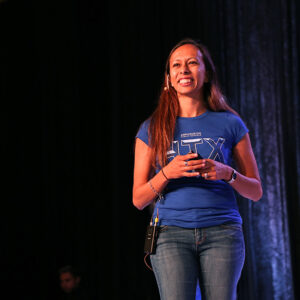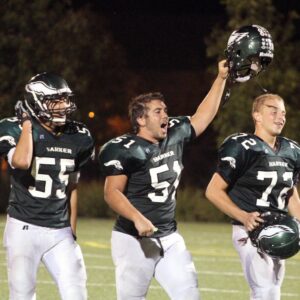This story originally appeared in the spring 2014 Harker Quarterly.
On the parenting circuit these days there is much talk about resilience, grit and how these two characteristics contribute to success. Angela Lee Duckworth, an education researcher who studies non-IQ based competencies, has a popular TED talk on perseverance and grit. In Amy Chua’s new book, “The Triple Package,” she and her husband, Jed Rubenfeld, argue that impulse control is one of three traits that contribute to success. Paul Tough talks about grit in his acclaimed “How Children Succeed.” It seems that parents and education researchers cannot get enough of “true grit.”
But how do we teach such things as grit and perseverance? In educational research we periodically discover the secret to success and then try to figure out how to teach it. We pretend the secret to success is teachable and we react to its discovery as if we found plutonium. Can we teach grit? It is not unlike asking whether or not we can teach creativity, entrepreneurialism or thinking skills. And how new an insight is this? Would our grandparents be surprised by the notion that grit and perseverance contribute to success?
April is Ogre Awards month at Harker, when the second grade celebrates stories from around the world. Many of the ancient stories – myths, folk and fairy tales – instruct in grit and perseverance, though they never use these terms. In these stories, heroes figuratively transform their greatest weakness into their greatest strength; their fear into courage; their spiritual poverty into soulful gold. These transformations are demonstrated, not discussed, and they communicate straight to a child’s psyche, bypassing his brain. In this regard they are the opposite of algebra.
In many of the stories by the Brothers Grimm and others, for instance, a hero faces the darker elements of nature, himself or experiences a humbling ordeal. Cinderella famously spends her days sweeping the hearth; the king’s son in Iron Hans apprentices himself to the gardener; Hansel and Gretel are taken to the witch’s home; Jonah is swallowed by a whale; Odysseus travels to the underworld.
These structures persist in contemporary storytelling too. Luke Skywalker flies into the center of the Death Star. In “Cloudy with a Chance of Meatballs,” Flint Lockwood, the movie’s hero, journeys to the center of a giant meatball to thwart food hurricanes. There is something in the structure of these stories that resonates with the structure of our psyches. When children tap into grit or persevere through difficulty, they are experiencing their own ordeal through which transformation happens.
There are parts of life that no amount of “helicopter parenting,” “snowplow parenting” or even “tiger mothering” can immune our children from, however well-intentioned. I think we sometimes fruitlessly try to bring our children all light and no darkness, but that is not how existence works. My father-in-law always says that we cannot walk in our children’s shoes – they will find their own way. On the search for the Holy Grail, Percival, one of King Arthur’s knights, must enter the woods where there is no path.
The newly found awareness of grit and perseverance is probably good for parenting, education and kids, though like many other fads, I hope parents and educators do not take it too far. I can see courses and assemblies on grit. Better to have kids discover their grit naturally and intrinsically. Lao Tzu said, “Mastering others is power. Mastering yourself is true strength.” It is the hope of education that each child, through grit and perseverance, finds true strength and takes the journey of a lifetime – her own.









